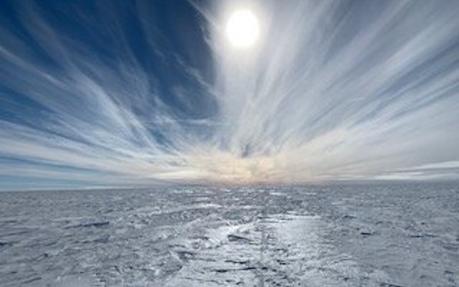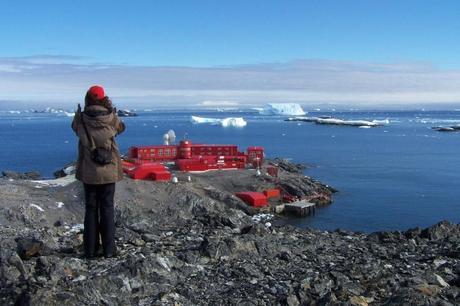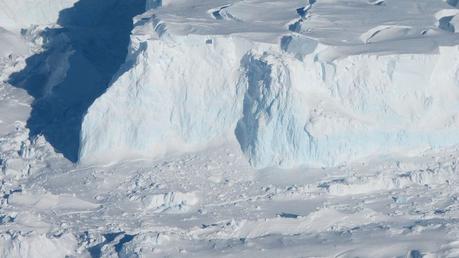It was about one year ago at this time that we first started hearing rumors of a strange new virus that was spreading across parts of China. News reports indicated that doctors in the city of Wuhan were struggling to contain a particularly virulent strain of this new disease which was infecting people at an alarming rate.
We didn't know it then, but this new novel coronavirus-soon dubbed COVID-19-would have a dramatic impact on our planet. In the months that followed, more than 80 million people would contract the virus with 1.8 million losing their lives. Its rapid spread brought strict lockdowns, economic hardships, and severely restricted travel. It also introduced us to the term "social distancing" and forced us to wear masks while in public.
The virus has been so rampant over the past 12 months that nearly every corner of our planet has been ravaged by COVID-19 to some degree or another. In fact, the one place that it hadn't touched was Antarctica, which for a time seemed isolated enough to avoid infection. But that time has come to an end, as now the coronavirus has reached its seventh continent, reminding us once again just how dangerous the disease can be.

Remote and Sheltered
Although it took just a matter of a few weeks for the coronavirus to spread to the other six continents, there are a number of reasons why Antarctica was able to hold out for so long. For starters, the number of people who actually live there is incredibly small, with only a few hundred individuals inhabiting the continent at the best of times. Most of those work at one of several research stations scattered across the continent, although during the austral summer there are explorers, climbers, and hardy adventure travelers that visit the Antarctic as well.
Winter begins in March-which was when COVID-19 really started to take hold-and lasts until November. During that time, the number of people living in the Antarctic is reduced down to just very small skeleton crews who maintain the research stations until the return of summer. Travel is highly restricted during those months, with no one coming and going during that time.
However, come November and December travel to and from Antarctica gets a lot safer and easier, with dozens of people coming and going on a regular basis. With that in mind, it should come as no surprise that one of those people was positive for the virus and managed to infect a number of their coworkers too.

The Antarctic Bubble Bursts
Back in September, the Associated Press posted a story about how Antarctica had remained COVID free. In that article, one scientists was quoted as saying that those were living there at the time were in a "safe little bubble." A week or so back that bubble burst when one of the research stations experienced the first outbreak of virus on the continent.
According to reports, 36 people living at the General Bernardo O'Higgins Riquelme research base-which is owned and operated by Chile-have taken ill with COVID. Amongst them were 26 members of the Chilean military, along with ten civilian staffers.
Fortunately, for all involved, Chilean military officials were able to act quickly and organized an evacuation of all those who tested positive for the coronavirus. Those individuals were removed from the base and taken to the town of Punta Arenas in southern Chile where they remain under quarantine. A replacement crew also spent time in isolation before flying to the base. Each of those individuals has tested negative or the virus.

An Isolated Incident?
News of this outbreak begs the question of how it even happened at all. Considering the highly infectious nature of the virus, it would seem that anyone who is traveling to an Antarctic base should have to isolate for a minimum of 10-14 days and test negative for COVID before ever stepping foot on a ship or plane. Some how that didn't happen here and 36 people contracted the diseases as a result.
All of the nations who maintain bases in the Antarctic-which includes the U.S., the U.K., Russia, China, Argentina and others-have instituted strict rules for travel this year. Those regulations do indeed include quarantining for an extended period of time and passing multiple tests. Somehow, the Chilean team managed to bungle this protocol however, creating a potentially dangerous situation as a result. Thankfully, none of the crew seems to be in grave danger at the moment and most are simply waiting out their imposed isolation before heading home.
This story should remind every other country of the importance of maintaining their quarantine process in order to keep their research teams safe. Despite this recent outbreak, Antarctica should remain the easiest place on the planet to keep free of COVID, provided a little planning and foresight is used.
2021 and Beyond
Most of the Antarctic research bases will continue with a full crew through the end of January. After that, the stations start to transition back to a reduced staff for the long winter ahead. With no one coming and going from the continent during that time, those living there should remain isolated from the virus.
The hope is that the 2021 season will be a return to normalcy on the frozen continent. With multiple COVID vaccines available now or in the near future, there is cautious optimism that we can potentially stamp out the virus in weeks and months ahead. Hopefully in a year's time we'll all be getting back to the lives that we once led and the chances of another outbreak like the one at the Chilean base will be incredibly slim.
Lets hope that 2021-and the years that follow-will be better than the year we're about to end. At this point, I think we all deserve it.

